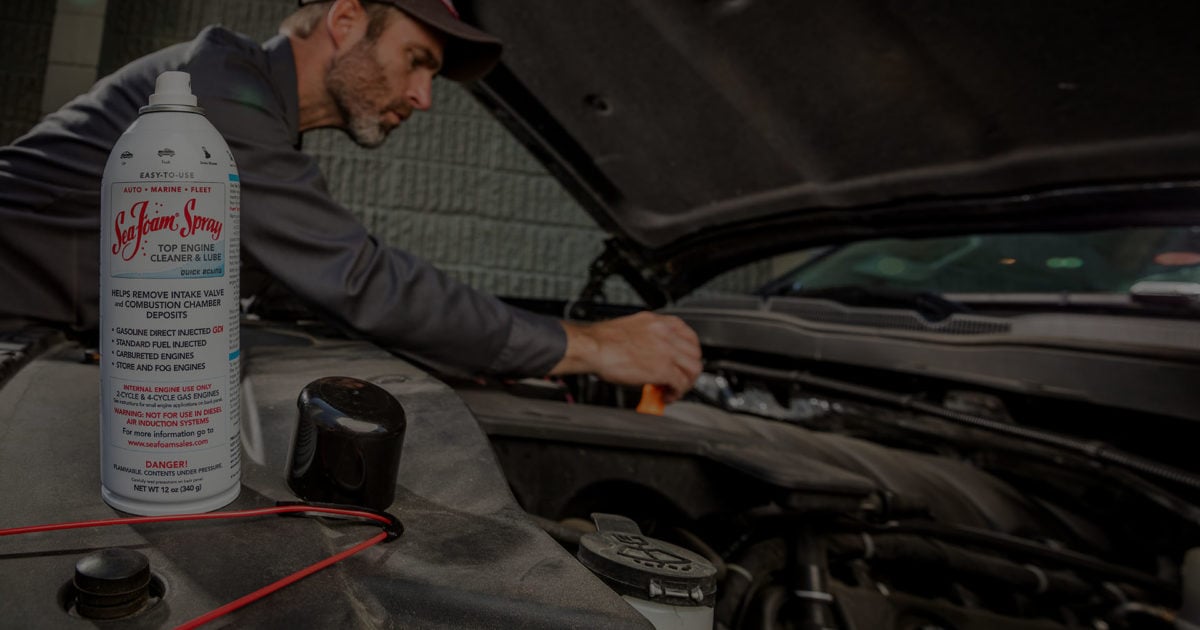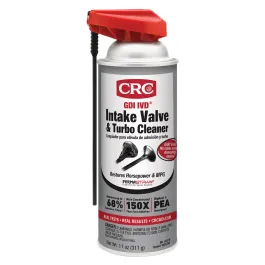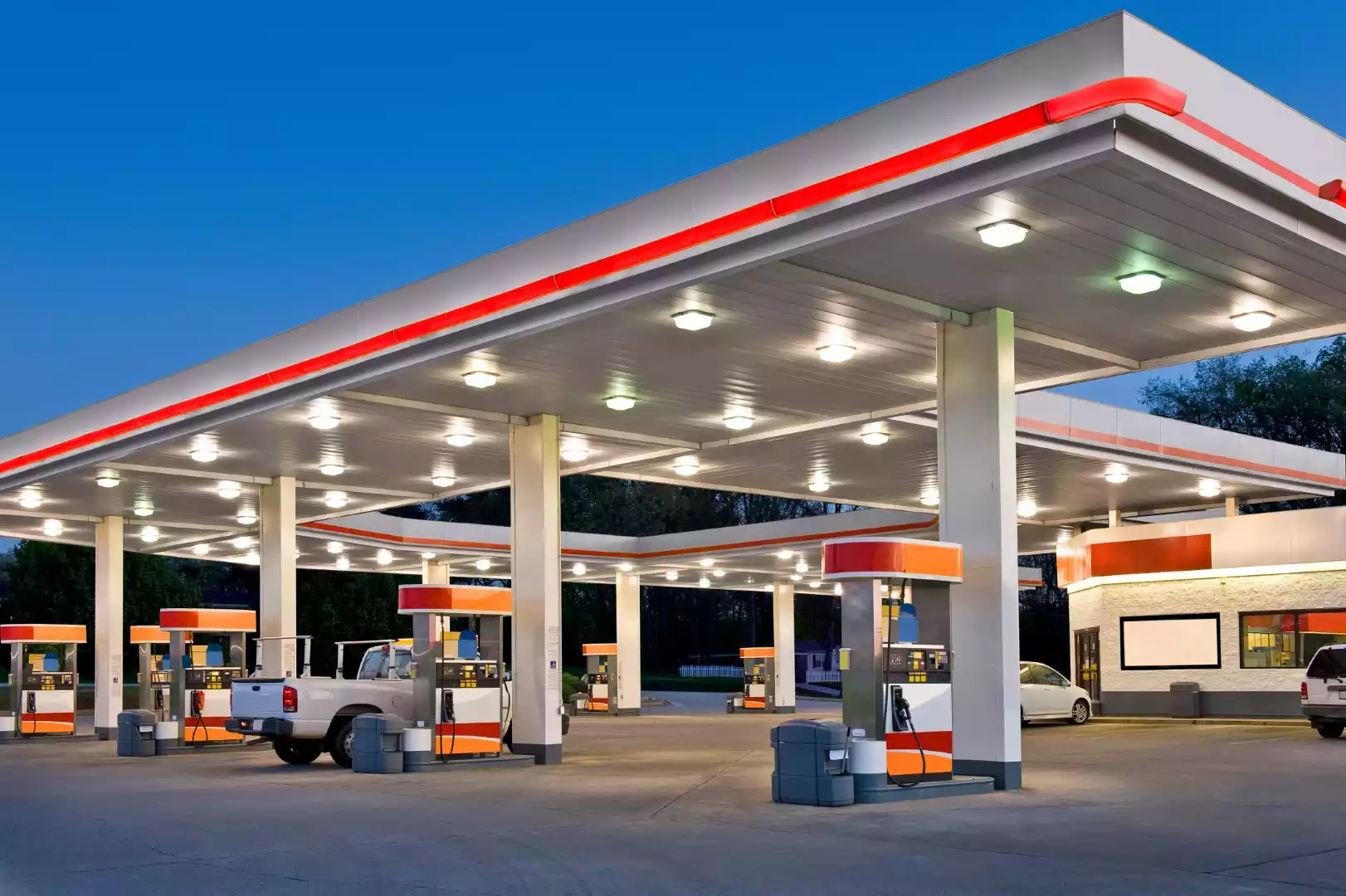Well after 150k trouble free miles I’ve noticed a slight decrease in power along with drop in fuel economy from the 2.0 Ecoboost. I’ve never had a rough idle or a check engine light but I figured it’s time to maybe run an intake cleaner through the system. I haven’t done it because the only easily accessible place for introducing the cleaner is from the air box and would end up running it through the turbo which I was under the impression is not good but now I’m seeing CRC has a product that is safe for turbos, contains PEA and if the throttle body isn’t easily accessible it’s ok to introduce it through the air intake pre turbo. My question is has anyone used one of these cleaners on a 2.0 ecoboost pre turbo or any insight on the best way to preform this procedure.
You are using an out of date browser. It may not display this or other websites correctly.
You should upgrade or use an alternative browser.
You should upgrade or use an alternative browser.
CRC intake valve & turbo cleaner on 2017 Ford Escape 2.0 Ecoboost
- Thread starter BigShug681
- Start date
BigShug681
Thread starter
Was this pre turbo? Just simply spraying it into the air intakeIve used the STP Pro Series before on my 3.5 Ecoboost with no issues.
What fuel are you running?Well after 150k trouble free miles I’ve noticed a slight decrease in power along with drop in fuel economy from the 2.0 Ecoboost. I’ve never had a rough idle or a check engine light but I figured it’s time to maybe run an intake cleaner through the system. I haven’t done it because the only easily accessible place for introducing the cleaner is from the air box and would end up running it through the turbo which I was under the impression is not good but now I’m seeing CRC has a product that is safe for turbos, contains PEA and if the throttle body isn’t easily accessible it’s ok to introduce it through the air intake pre turbo. My question is has anyone used one of these cleaners on a 2.0 ecoboost pre turbo or any insight on the best way to preform this procedure.
BigShug681
Thread starter
Try to maintain top tier but that hasn’t been very easy this last year and a half it seems, most of my stations have now removed the top tier stickers from the pump
YesWas this pre turbo? Just simply spraying it into the air intake
- Joined
- Jul 11, 2014
- Messages
- 4,118
I've sprayed into the turbo.. not an issue. CRC was originally called intake valve and turbo cleaner. I would have no issue using ANY of the cleaners into the turbo and do so!
Start by making sure you remove as much 'carbon' from inside the engine. This is by running a quality fuel system cleaner for a full tank BEFORE even starting the procedure. This is when you toss in a big bottle of Techron concentrate, Amsoil PI, Redline SI1, STP5in1, Gumout Regane, RoyalPurple, 3m, Lubegard, Seafoam, or Berrymans.... at your next premium toptier fuel fill up, and then run the tank empty.
And then, since some spray IV cleaners use solvent carriers and can cause detonation, fill with a quality premium fuel for your IVD cleaning. I get the 93 octane PI/detonation reducing fuels from ExxonMobil, ChevronTexaco, and Shell. Obviously, some states limit octane so pick the best locally available toptier stuff.
You'll will need a helper for RPM control for some products that might cause the engine to stall. This is when you spray for 5-10 second bursts on and then off again. Budget 15-20 minutes for spraying. Other products use more 'alcohol' or 'gasoline ingredients' as a carrier, or do a better job misting the solution, or have a lower nozzle feed rate, so that it doesn't bog the RPM down much. I don't have brand loyalty so use whatever IV cleaner is available around you and read the directions.
After emptying the can into turbo, shut engine down and let it soak. After a soak, longer the better, take it out for a gentle ride. Any residual 'condensate' will find its way thru the manifold and thru the engine. Don't be the foolish pedal-to-the-floor-yahoo creating a smoke show in rush hour traffic. Drive around for 30 minutes with a light gentle foot on egg shell pedal, and during that trip, slowly increase go-pedal application and engine rpm.
Then, go home and change the oil and filter.

 lucasoil.com
lucasoil.com

 www.crcindustries.com
www.crcindustries.com
 www.berrymanproducts.com
www.berrymanproducts.com
 www.stp.com
www.stp.com
Start by making sure you remove as much 'carbon' from inside the engine. This is by running a quality fuel system cleaner for a full tank BEFORE even starting the procedure. This is when you toss in a big bottle of Techron concentrate, Amsoil PI, Redline SI1, STP5in1, Gumout Regane, RoyalPurple, 3m, Lubegard, Seafoam, or Berrymans.... at your next premium toptier fuel fill up, and then run the tank empty.
And then, since some spray IV cleaners use solvent carriers and can cause detonation, fill with a quality premium fuel for your IVD cleaning. I get the 93 octane PI/detonation reducing fuels from ExxonMobil, ChevronTexaco, and Shell. Obviously, some states limit octane so pick the best locally available toptier stuff.
You'll will need a helper for RPM control for some products that might cause the engine to stall. This is when you spray for 5-10 second bursts on and then off again. Budget 15-20 minutes for spraying. Other products use more 'alcohol' or 'gasoline ingredients' as a carrier, or do a better job misting the solution, or have a lower nozzle feed rate, so that it doesn't bog the RPM down much. I don't have brand loyalty so use whatever IV cleaner is available around you and read the directions.
After emptying the can into turbo, shut engine down and let it soak. After a soak, longer the better, take it out for a gentle ride. Any residual 'condensate' will find its way thru the manifold and thru the engine. Don't be the foolish pedal-to-the-floor-yahoo creating a smoke show in rush hour traffic. Drive around for 30 minutes with a light gentle foot on egg shell pedal, and during that trip, slowly increase go-pedal application and engine rpm.
Then, go home and change the oil and filter.

Sea Foam Spray | Intake Valve and Top Engine Cleaner and Lubricant
Sea Foam Spray Top Engine Cleaner & Lube works through an engine’s upper intake to clean harmful deposits from intake valves and chamber areas.
seafoamworks.com
Deep Clean™ GDI | Lucas Oil Products
Lucas Deep Clean™ GDI is designed to remedy and prevent problems associated with the harmful carbon deposits that rob your engine of performance and fuel economy.

CRC® GDI IVD® Intake Valve & Turbo Cleaner, 11 Wt Oz
Do you want to remove carbon buildup from the intake valve of your GDI engine without the expense of a costly tear down? CRC GDI IVD® Intake Valve & Turbo Cleaner is the solution you need! This intake valve cleaner uses a specialized formula to break down carbon deposits that choke your...
Berryman® Intake Valve & Combustion Chamber Cleaner
Pro-Series Intake Valve Cleaner | STP®
STP® Pro-Series Intake Valve Cleaner is a DIY intake valve cleaning solution designed to remove hardened deposits without a costly engine teardown.
Which octane rating do you usually choose?Try to maintain top tier but that hasn’t been very easy this last year and a half it seems, most of my stations have now removed the top tier stickers from the pump
- Joined
- Jul 11, 2014
- Messages
- 4,118
I don't need toptier stickers. I just utilize the list or marketing equivalents.
Here's the list:

 toptiergas.com
toptiergas.com
BP is not toptier. They were and I'm guessing that they didn't care for the cool kid club membership. There may be other brands that go 'beyond' the EPA's minimum requirement. US government requires a minimum amount of deposit-control additive to be present in all US fuels — but all grades of bp/amoco gasoline with Invigorate go beyond these minimum standards in an effort to provide additional benefits to drivers who use our fuel.
Here's the list:

Fuel Stations - TOP TIER™
TOP TIER™ Licensed Brands prominently display the TOP TIER™ logo on the pump, pump handle, canopy or in a station window.
 toptiergas.com
toptiergas.com
BP is not toptier. They were and I'm guessing that they didn't care for the cool kid club membership. There may be other brands that go 'beyond' the EPA's minimum requirement. US government requires a minimum amount of deposit-control additive to be present in all US fuels — but all grades of bp/amoco gasoline with Invigorate go beyond these minimum standards in an effort to provide additional benefits to drivers who use our fuel.
BigShug681
Thread starter
Since no fuel washes over the valves top tier or not should have little effect correct?
That depends largely on the fuel system used. Both my Lexus and ford (eco 2.7) use both direct and port injection. It favors port injection at lower power levels and direct injection at higher outputs, with overlap on about 80% of the time with the Ford.
BigShug681
Thread starter
It’s DI only don’t believe they had started the dual system yet for the 2.0 EcoboostThat depends largely on the fuel system used. Both my Lexus and ford (eco 2.7) use both direct and port injection. It favors port injection at lower power levels and direct injection at higher outputs, with overlap on about 80% of the time with the Ford.
- Joined
- Jul 11, 2014
- Messages
- 4,118
Ton of effect at keep carbon build up on the pistons/cc to a minimum and on keeping the injectors clean, which helps keep the engine in proper running condition.Since no fuel washes over the valves top tier or not should have little effect correct?
Thinking spraying thru the turbo that all that mist would collect in the intercooler losing a lot of the benefits of spraying after the turbo/intercooler.Well after 150k trouble free miles I’ve noticed a slight decrease in power along with drop in fuel economy from the 2.0 Ecoboost. I’ve never had a rough idle or a check engine light but I figured it’s time to maybe run an intake cleaner through the system. I haven’t done it because the only easily accessible place for introducing the cleaner is from the air box and would end up running it through the turbo which I was under the impression is not good but now I’m seeing CRC has a product that is safe for turbos, contains PEA and if the throttle body isn’t easily accessible it’s ok to introduce it through the air intake pre turbo. My question is has anyone used one of these cleaners on a 2.0 ecoboost pre turbo or any insight on the best way to preform this procedure.
BigShug681
Thread starter
But that’s not the issue, I run gumout regularly I’m sure that’s all clean the issue is I need to get the valves cleanTon of effect at keep carbon build up on the pistons/cc to a minimum and on keeping the injectors clean, which helps keep the engine in proper running condition.
BigShug681
Thread starter
Even with the engine being held at 2k rpms, shouldn’t that be enough to keep the spray flowing through the intercooler? I’d love to just spray it into the throttle body but it’s a rather pain to get to not sure where else I could introduce the solution other than thatThinking spraying thru the turbo that all that mist would collect in the intercooler losing a lot of the benefits of spraying after the turbo/intercooler.
- Joined
- Jul 11, 2014
- Messages
- 4,118
Then use the intake cleaner as seen in the title of this thread, or equivalent competitor product.But that’s not the issue, I run gumout regularly I’m sure that’s all clean the issue is I need to get the valves clean
BigShug681
Thread starter
Yes I know I’m asking though what’s the best way to go about it on a 2.0 Ecoboost, procedure wiseThen use the intake cleaner as seen in the title of this thread, or equivalent competitor product.
Get STP Pro Series and run it right into the Throttle Body. That way it won't go through the turbo and intercooler.Yes I know I’m asking though what’s the best way to go about it on a 2.0 Ecoboost, procedure wise
BigShug681
Thread starter
Get STP Pro Series and run it right into the Throttle Body. That way it won't go through the turbo and intercooler.
Similar threads
- Replies
- 6
- Views
- 2K
- Replies
- 27
- Views
- 1K
- Replies
- 8
- Views
- 1K
- Replies
- 28
- Views
- 2K
